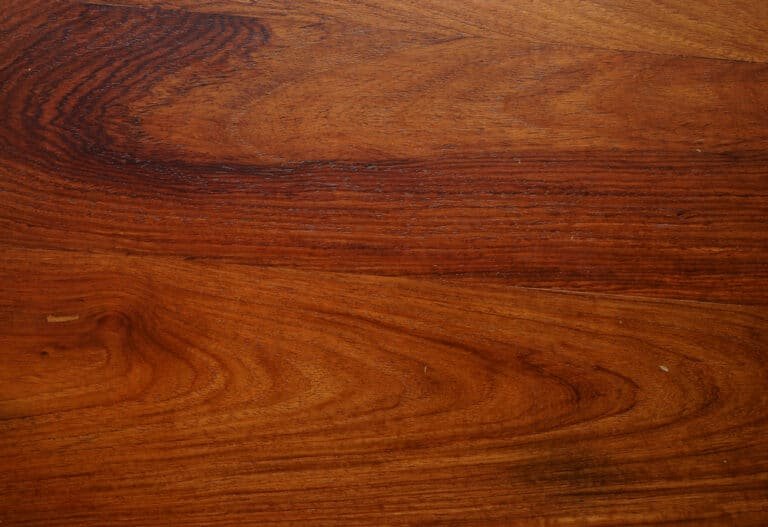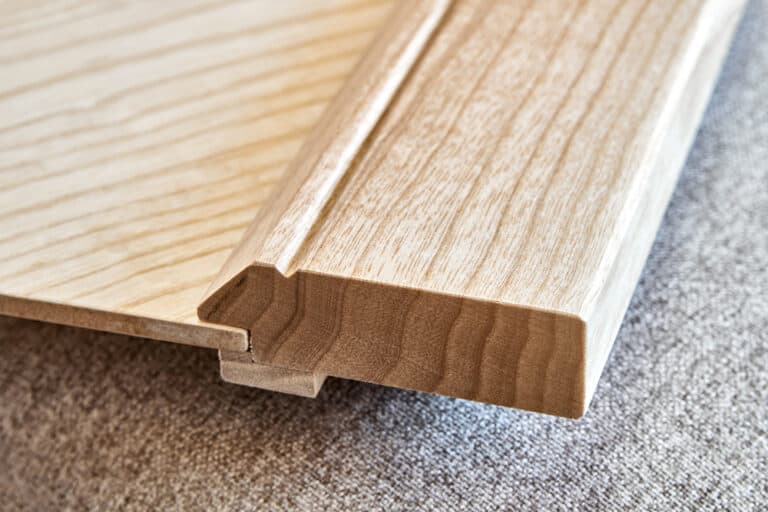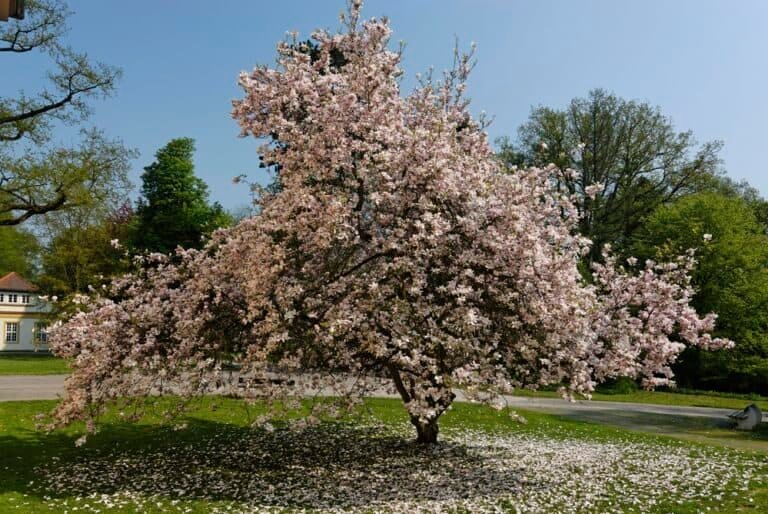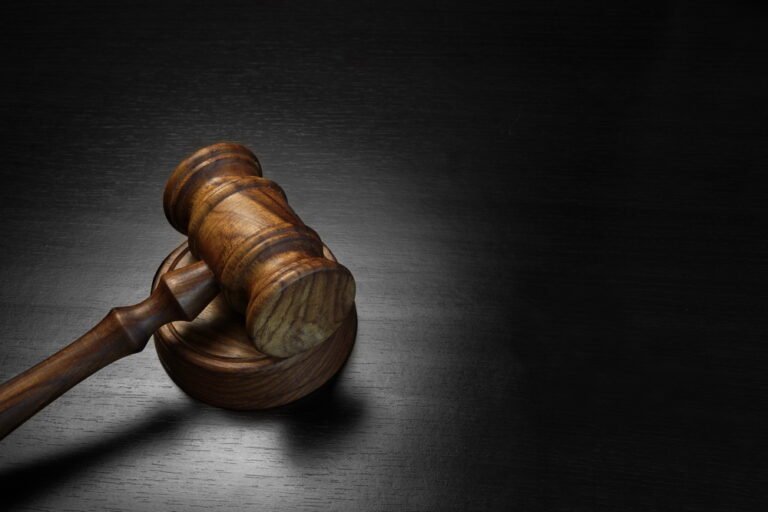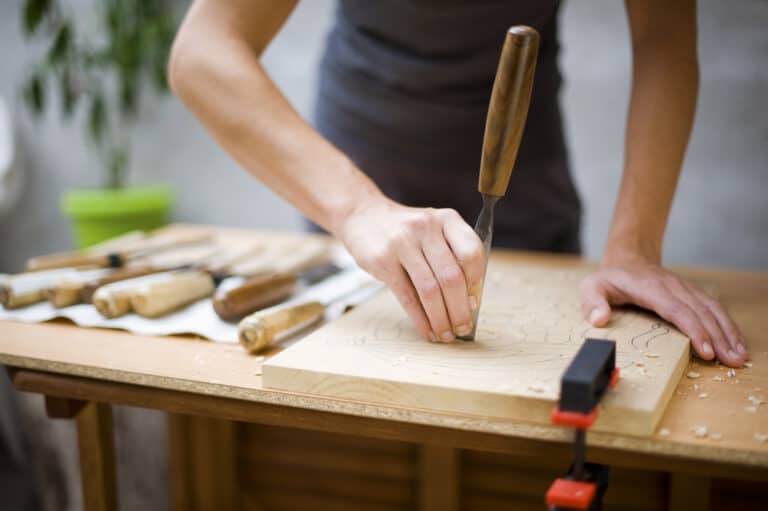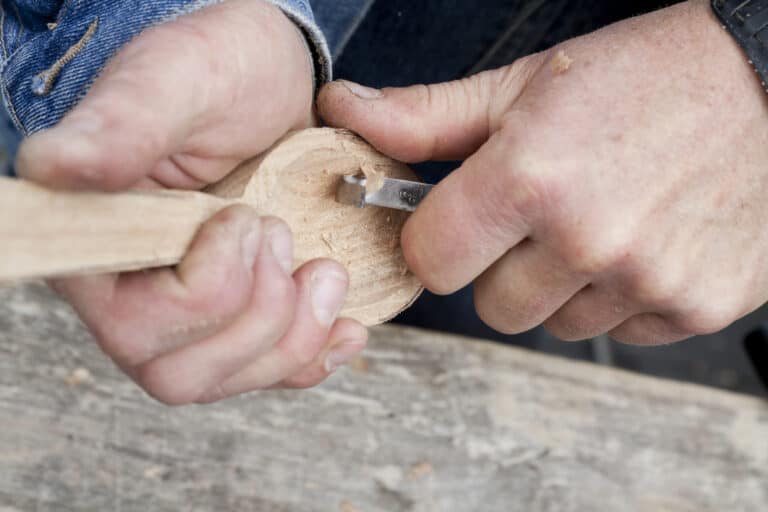- Birch wood is suitable for most carving projects.
- Knowledge of different types of birch wood is essential for choosing the right material for your project.
- Carving birch wood may require power tools, especially when working with hardened or dried wood.
Is Birch Wood Good for Carving?
Birchwood is good for carving. While birch can be carved using hand tools, it becomes more challenging once the wood dries and hardens. Many carvers prefer using power tools when working with dried birch wood to ensure a smoother and more pleasant carving experience.

Pros of Carving With Birch
- Fine Grain and Smooth Texture: Birch has a fine, even grain, which makes it ideal for detailed carving. The smooth texture ensures a clean finish, making it easier to work with for intricate designs.
- Hardness and Durability: Birch is a hardwood, which means it is durable and can withstand wear and tear. This makes it suitable for items that require longevity, such as furniture or decorative items that will be handled frequently.
- Good Strength-to-Weight Ratio: While birch is hard and durable, it is not excessively heavy. This balance of strength and weight makes it a good choice for larger carvings or items that need to be moved around.
- Uniform Color: Birch wood typically has a light, uniform color. This provides a neutral base for stains and finishes, allowing for a wide range of artistic choices in terms of coloring and finishing.
- Availability and Cost-Effectiveness: Birch is widely available in many regions, making it a cost-effective option for wood carving. It’s a common wood in many parts of the world, which also reduces the cost.
- Ease of Working: Birch is generally easy to cut, shape, and sand, which is beneficial for both beginners and experienced carvers. It does not blunt tools as quickly as some harder woods.
- Good for Painting and Finishing: Due to its fine grain and smooth surface, birch takes paint and other finishes very well, which is great for decorative pieces.
- Minimal Warping and Shrinking: Birch is known for its stability, which means it is less likely to warp or shrink over time than other types of wood.
Cons of Carving with Birch
- Prone to Rot and Decay in Moist Conditions: Birch wood is not naturally resistant to moisture and can be prone to rot and decay if exposed to damp conditions. This makes it less suitable for outdoor projects unless properly treated and sealed.
- Requires Regular Maintenance: To maintain its appearance and durability, birch wood often needs regular maintenance, such as sealing or varnishing, especially if used in environments where it might be exposed to moisture.
- Can Be Difficult to Stain Evenly: While birch takes paint well, it can sometimes absorb stain unevenly, leading to blotchiness. This requires skill and experience to achieve a uniform finish when staining.
- Susceptibility to Insects: Birch can be susceptible to insect damage, particularly if not properly treated or if used in outdoor settings.
- Blunting of Tools: Birch is a hardwood, and although it’s not as hard as some others like oak or maple, it can still cause blunting of carving tools more quickly than softer woods. This requires frequent sharpening of tools for precise work.
- Potential for Warping During Drying: If not dried properly, birch wood can warp or crack. This makes the drying process critical and sometimes tricky, especially for larger pieces.
- Sensitivity to Sunlight: Over time, birch wood can change color or become discolored when exposed to sunlight. This is something to consider for pieces that will be placed in areas receiving direct sunlight.
- Limited Natural Color Range: While the light color of birch can be an advantage for some projects, it also limits the natural color range. This might not be desirable for projects where a richer or darker natural wood color is preferred.
These cons don’t necessarily outweigh the pros, but they are important considerations depending on the specific requirements and conditions of your wood carving project.
The Basics of Birch Wood Carving
Birch Wood Properties
Birch is a hardwood, making it relatively strong and difficult to carve using hand tools. It has a dense grain and texture, which contributes to its hardness. The Janka hardness of birch wood ranges from 910 (Yellow Birch) to 1260 (Paper Birch).
Selecting the Right Birch Wood
There are different types of birch wood such as paper, yellow, river, white, spalted, and black birch. For carving, it’s recommended to use green and freshly cut birch wood with high moisture content, which makes it malleable and easier to work with compared to dry birch. Dry birch will need more preparation, as you’ll have to moisturize it before carving.
Essential Carving Tools
When working with birch wood, ensure that your carving tools are sharp, as this helps in making precise cuts. Some common carving tools include:
- Gouges: These come in various shapes and sizes and are used to remove wood.
- Whittling tools: Ideal for detailed work and delicate cuts.
- Mallet: Used to strike the tools and make stronger cuts.
- Hand tools: Traditional wood carving tools such as chisels and knives.
- Power tools: Electric tools like rotary tools for faster and more efficient carving.
Using the right bevel angle, 20-25 degrees, is crucial for achieving clean and precise cuts when working with birch wood.
Preparing the Wood
Green Birch: Remove the bark and any debris from the surface.
Dry Birch: ensure it has adequate moisture content, as too dry birch can be challenging to carve. To achieve this, soak the wood in water or a mixture of water and wood conditioner for a few hours. After that, let the wood air dry in a well-ventilated area.
Carving Techniques and Tips
Green Carving Vs. Dry Carving
When carving birch wood, you have the option to work with either green or dry wood. Green birch has a higher moisture content, making it easier to carve, while dry wood tends to be harder but holds details better. Put your green birch carvings in a zip bag to slowly dry them out, preventing cracking and damage.
Design and Pattern Transfer
Choose your design wisely based on the grain pattern and texture of birch wood. Patterns with fewer intricate details may be more suitable for birch, given its relatively plain grain pattern. To transfer your design onto the wood, you can use carbon paper, a stencil, or a wood-burning pen for precision and consistency.
Carving Process and Methods
Several carving methods are available, including whittling and chiseling. To whittle birch wood, it’s important to maintain a sharp knife with the appropriate bevel angle. Keep in mind that birch can be tough to work with once it dries, so proper technique is essential. Chiseling may also be used for shaping and adding depth to your carving.
Sanding and Finishing
Once you have completed the carving process, proper sanding and finishing are vital. Begin by using a coarse-grit sandpaper and gradually work your way up to finer grits. This will help to smooth out any rough areas and prepare the wood for finishing.
Apply a finish such as oil, wax, or stain to enhance the appearance of the wood and protect it from moisture and wear. Applying oil as a moisture regulator can help prevent shrinkage and splits in your whittling projects.
Common Projects and Applications for Birch
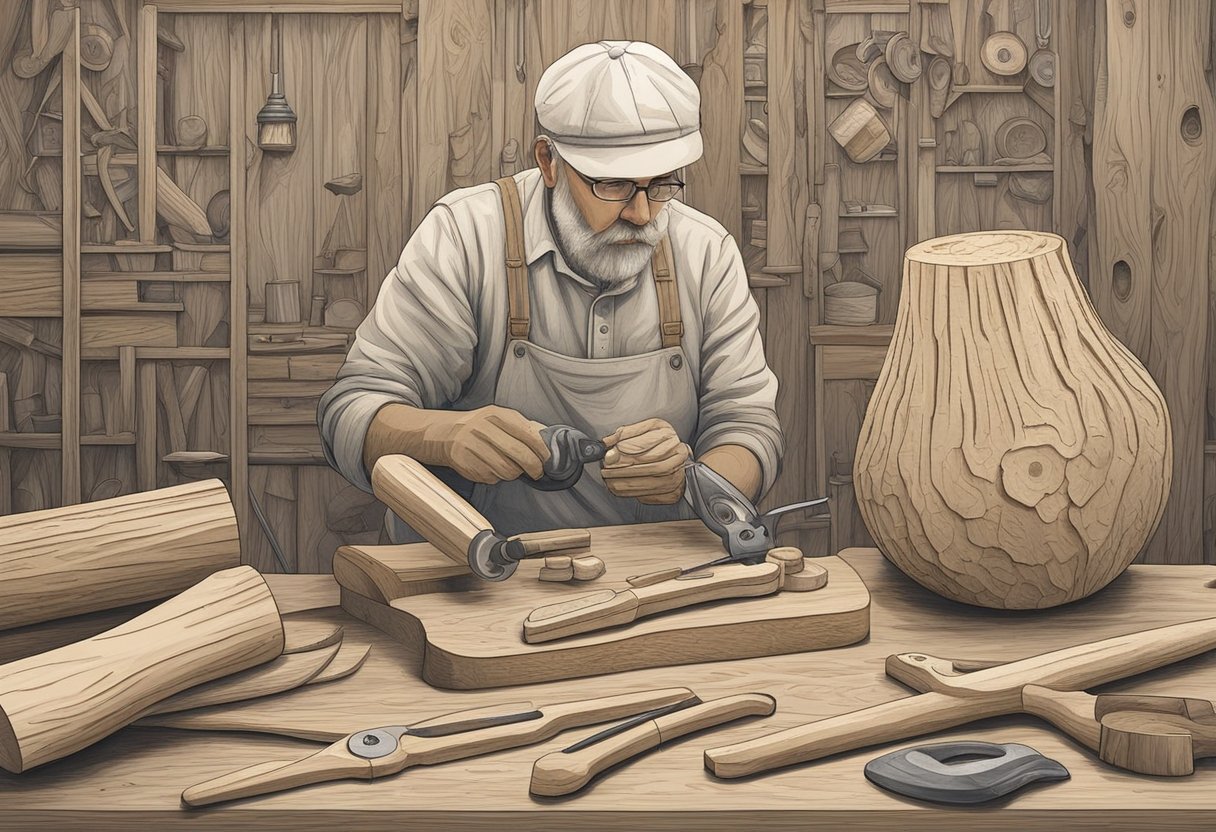
Furniture and Decorative Items
Birchwood is known for its stunning aesthetics and versatility, making it a popular choice for various furniture and decorative items. Its unique characteristics contribute to the creation of intricate patterns and designs.
Due to its durability and strength, birch surpasses pine and oak in terms of furniture craftsmanship. Carving freshly cut green birch contributes to its malleability, making it easier to work with when crafting pieces such as chairs, tables, and cabinets.
Functional Utensils and Tools
Birch wood is an excellent choice for functional utensils and tools. One popular project involving birch wood is spoon carving.
As you whittle a spoon from a block of birchwood, you’ll develop an appreciation for its tactile nature and ability to hold fine detail. Furthermore, birch wood’s natural strength and water resistance make it suitable for producing other utensils such as bowls, spatulas, and cutting boards, which can be used daily without losing their functionality or appeal.
Artistic and Detailed Work
In the hands of a skilled carver, birch wood transforms into intricate and attractive artistic works. Known for holding detail exceptionally well, this hardwood is a preferred medium for creating various detailed projects, such as sculptures, figurines, and reliefs.
Your creativity and patience can truly shine when working on intricate carving projects, creating beautiful pieces that reflect your dedication and enthusiasm for the craft. Remember always to choose high-quality birch wood and follow essential tips and techniques to conquer this robust hardwood with confidence.
Special Considerations for Birch Carving
Dealing with Hardness and Toughness
Birch is a hardwood that can present challenges when carving due to its toughness. To tackle this, ensure your tools are extremely sharp. Using razor-sharp gouges will help you make precise and clean cuts, making birch easier to carve.
Preventing Splitting and Cracking
When working with birch, it’s essential to be mindful of potential splitting and cracking. To prevent this, take precautions when carving green wood by avoiding direct sunlight exposure and allowing it to dry at a steady rate. Furthermore, take extra care near the ends of your piece, as this is where birch is weaker and more prone to brittleness.
Protection Against Decay and Rot
While birch has a natural resistance to decay and rot, you should still be proactive about protecting your carving for improved durability. Regularly apply oils, varnishes, or waxes to the surface to create a waterproof barrier and prevent moisture intrusion, which can lead to decay and fungus growth.
Color Differences and Aesthetic Choices
The white color of birch bark creates a unique and appealing aesthetic for your carving project. However, remember that birch can sometimes darken over time – a factor you may want to consider when planning your design. Also, birch trees can exhibit color differences, adding character to your project, though you should stay vigilant in selecting the right pieces for a consistent look.
Seasonal Effects on Wood Carving
The moisture content of birchwood tends to vary throughout the year, with drier wood available during the colder months. This can affect the overall carving experience, with green wood – wood that has not yet dried – generally more challenging to work with. To ensure optimal carving conditions, aim to choose dry wood whenever possible.
Economic and Environmental Factors
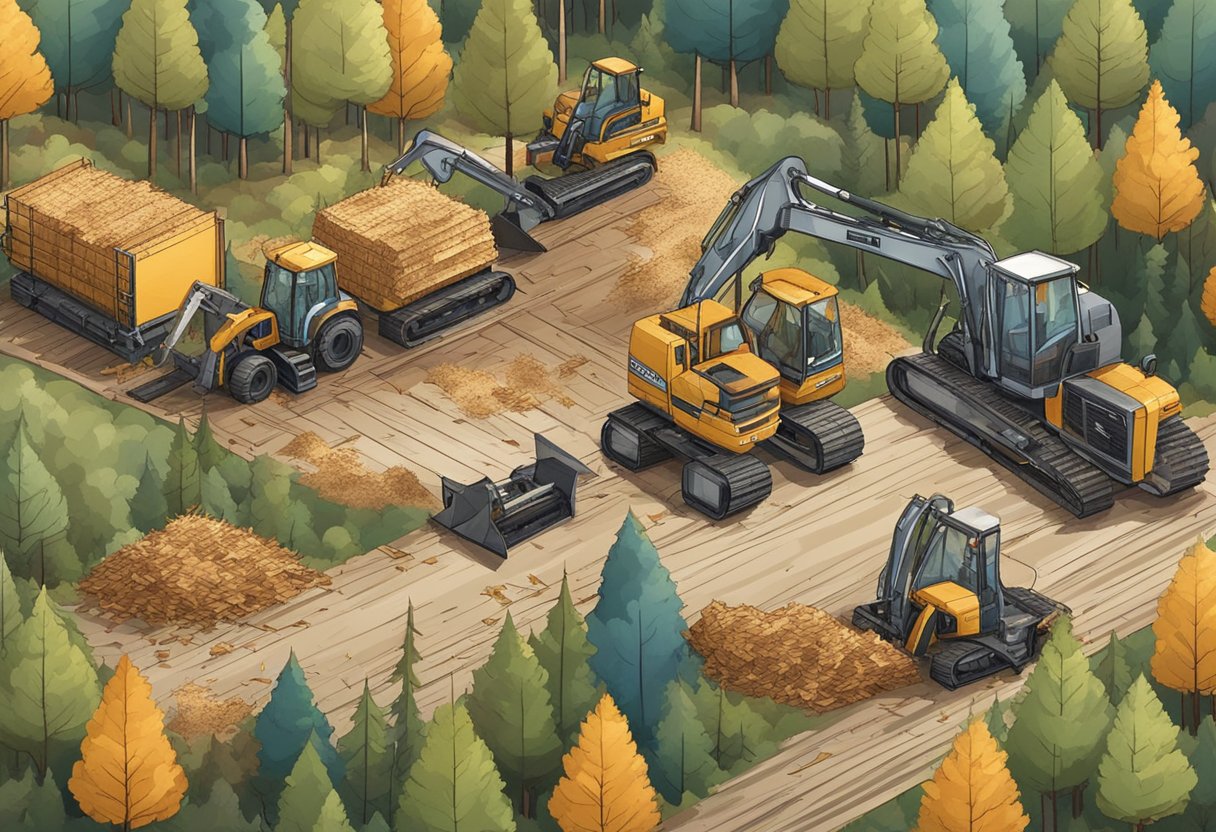
Birch Wood Availability and Pricing
Birchwood is a popular choice for carving projects due to its availability and relatively affordable price. Most birch trees are found in North America, making it an accessible wood option for those residing in the region. The price of birch wood may vary based on factors such as size, quantity, and quality, but it is generally less expensive than other hardwoods.
Choosing Sustainable Wood Options
It’s important to consider the sustainability of birch wood when planning your carving projects. As with all woods, overharvesting can lead to negative environmental impacts. You can opt for birch wood derived from sustainable sources to ensure minimal impact on the ecosystem. You may want to explore other sustainable wood options for your projects, such as reclaimed or recycled wood, as an environmentally responsible choice.
Maintaining a Safe Carving Environment
To ensure the safety of your carving environment, several factors need to be kept in mind:
- Food safe: If you’re creating a product that will come into contact with food, make sure the birch wood you use is food safe. Some treatments or finishes applied to the wood may not be safe for food contact, so verify the product you’re using is approved for this purpose.
- Moisture control: Birchwood is susceptible to moisture, which can cause it to warp or rot when exposed to moist conditions. Store your wood in a dry, cool place before working with it, and apply appropriate sealants or finishes to protect it from moisture once your project is complete.
- Ventilation: Carving involves using tools and materials, such as wood dust, adhesives, and finishes, that may pose risks if not handled properly. It’s essential to work in a well-ventilated area to minimize the inhalation of dust and fumes and to follow safety guidelines when using carving tools and materials.
